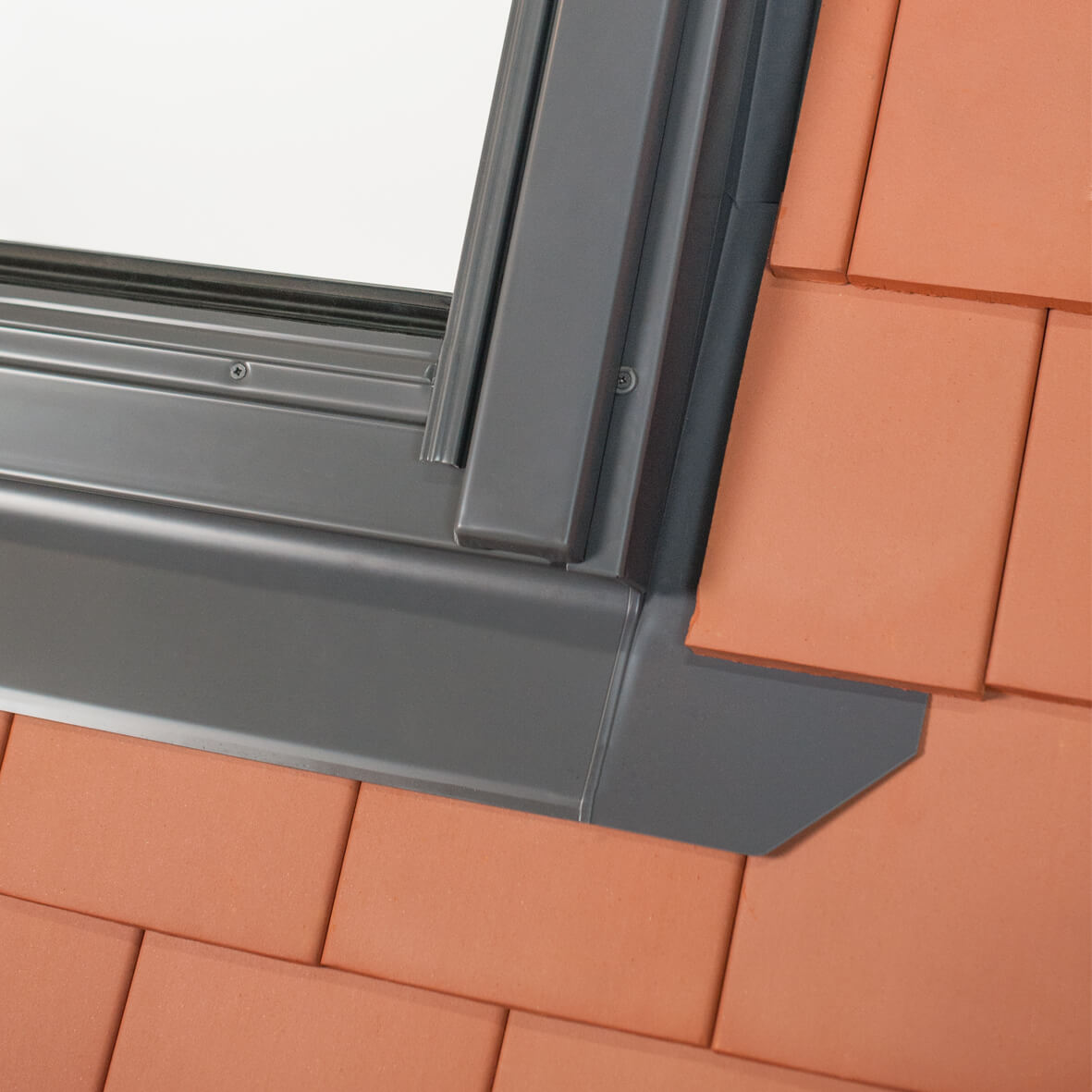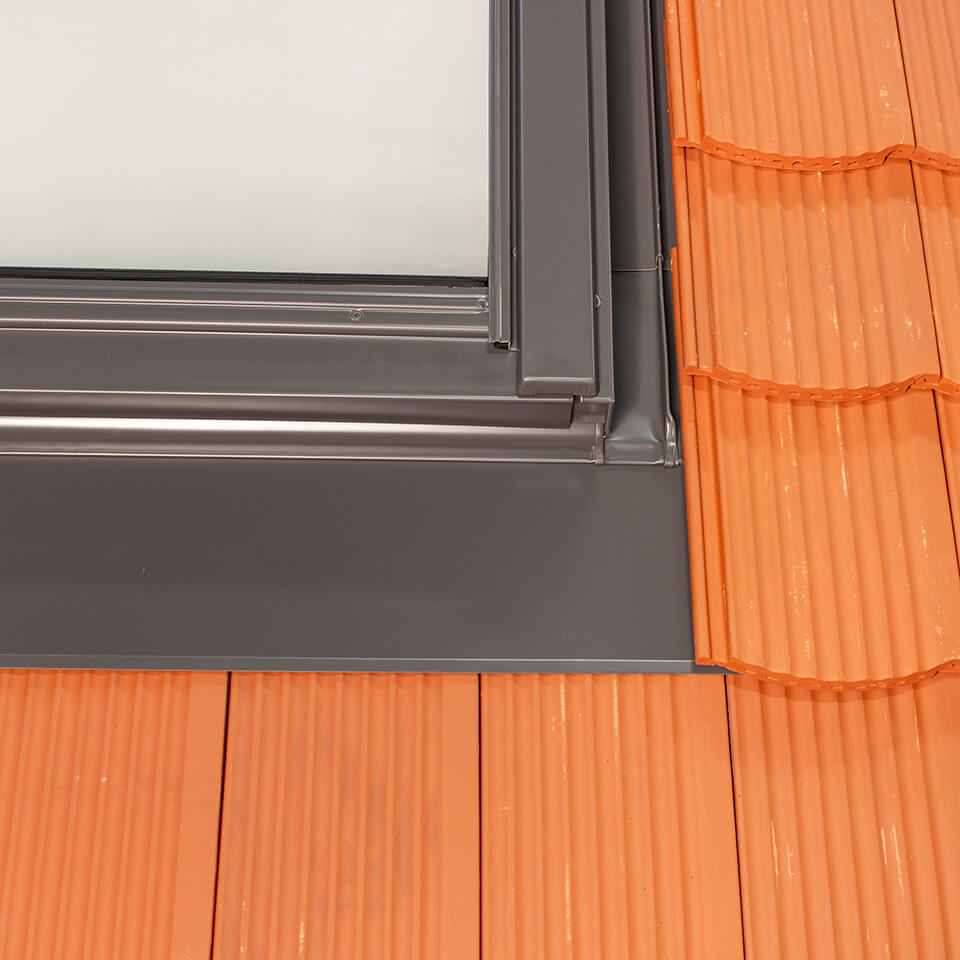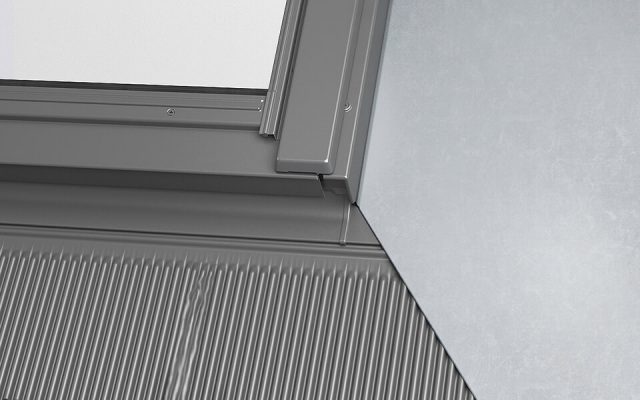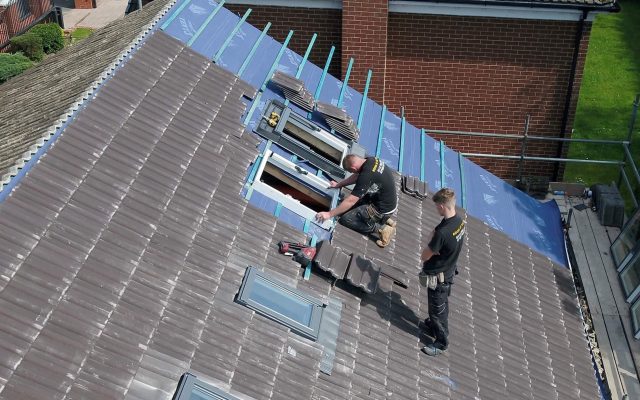Condensation or leak?
The easiest way to check this is to monitor the leak and dripping water in different weather conditions and, if you can view it well enough, to see if the window looks ‘cloudy’ or wet. If it leaks when it’s cold outside, but not raining, it’s most likely condensation. You can also check for other signs of condensation in your house such as condensation on vertical windows, mildew or peeling paint. Frequently drying clothes in your room or cooking and bathing without adequate ventilation, for example, increases the likelihood of internal condensation.
If you think condensation is affecting your home and roof windows there are a number of things you should do. Read our article on stopping window condensation for more details.

2. Leaks in heavy rain
If your roof window or skylight leaks in heavy rain, then it’s unlikely to be caused by condensation. Instead, there could be problems with the flashing or the installation of the window – or possibly with the roof overall. Below, we’ve outlined how to identify each problem and how to fix it.
Leaks due to Flashing
Check the flashing around your window by first clearing away any leaves, moss or other debris from the window’s exterior. This should be done on a regular basis. Then examine the flashing for gaps or holes or loose fixings. If you’re not a roofer, don’t try this yourself! Instead call in professionals who will be able to access the roof safely and will have the expertise to diagnose the problem.
How to Repair
If you have an old roof window or skylight, it’s possible that the flashing has become damaged or worn over time. In this instance, it might need to be replaced with new roof window flashing or a new skylight window complete and professionally installed. Also remember that a new roof window will have better performance in terms of efficiency and features.
If there is just a small gap in the flashing, but it’s otherwise in a good condition, you can use roofing sealant or external grade silicone caulking to seal the hole. Keep an eye on the window over the next few weeks to check that the problem has been solved.
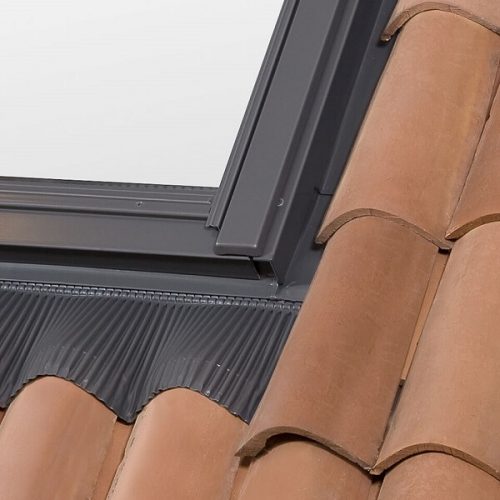
Poorly Installed Roof Windows or Skylights
In some instances, poor installation of the roof window or skylight can cause problems with leaking. If you’re a homeowner and notice leaking shortly after having a window or skylight installed, you should contact your installer and ask them to return to fix the problem.
If you’re looking for a professional window installer, try exploring our ‘where to buy’ page.
Broken Closing Mechanism
When you examine your window, if it’s openable, check that there’s nothing stopping the window from closing fully, such as twigs, leaves or other debris. Also check that the closing mechanism works properly. If it’s damaged, the leak could be caused by the window not sealing when it closes and leading to dripping water.
How to Repair
If it’s a blockage causing the problem, simply remove any debris from the window. Where possible, identify the cause of debris build up and deal with it to prevent further problems. Sometimes this won’t be possible – such as wind blowing leaves onto the roof – but other times it might be – such as tree branches hanging over the roof area that need trimming or removing.
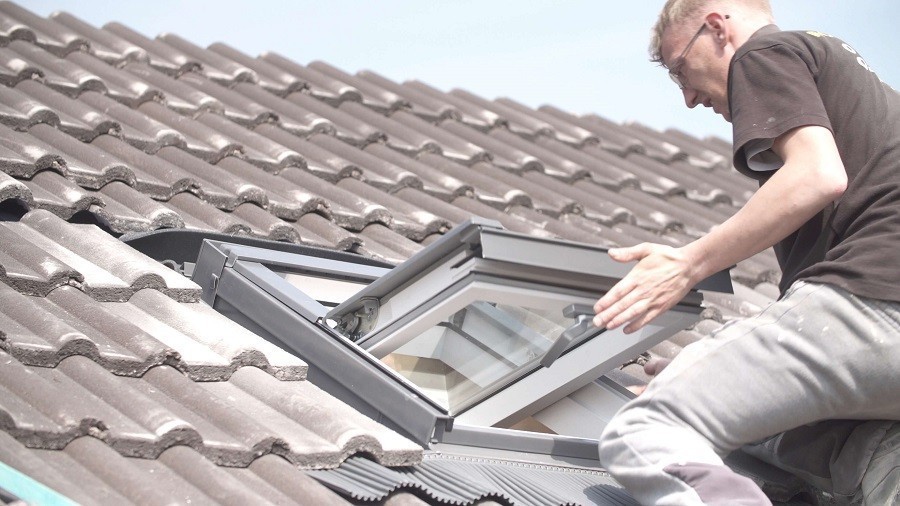
Roof Leaks
Sometimes, dripping water from a leaking roof window or skylight is actually caused by a leaking roof. The water coming in from the roof can run to the roof window or skylight and drip from there, making it appear like the window itself is the problem. You are also more likely to see water staining/damage around the window if the actual roof is leaking. Roof leaks are commonly caused by damaged slates, tiles or other roof coverings, particularly if you have an older roof and if there has been recent bad weather such as strong winds.
To diagnose this problem, you need to inspect the roof around the skylight. Look for any missing or damaged tiles, slates, roofing sheets and so on.
How to Repair
It’s vital to get a damaged roof repaired quickly to prevent any serious damage to the property. Remember that water ingress into your roof can cause other problems with the roof structure, timbers, and services.
Depending on the overall condition of your roof, it might be that a single tile or slate can be replaced, or it might be that the whole roof needs reworking or replacing in order to ensure further leaks don’t occur in the future.
If you’re a homeowner and are unsure of how to fix your roof window or skylight, always call a local roofer or professional roof window installer. Experts will be able to safely diagnose the cause of the leak and repair it effectively.
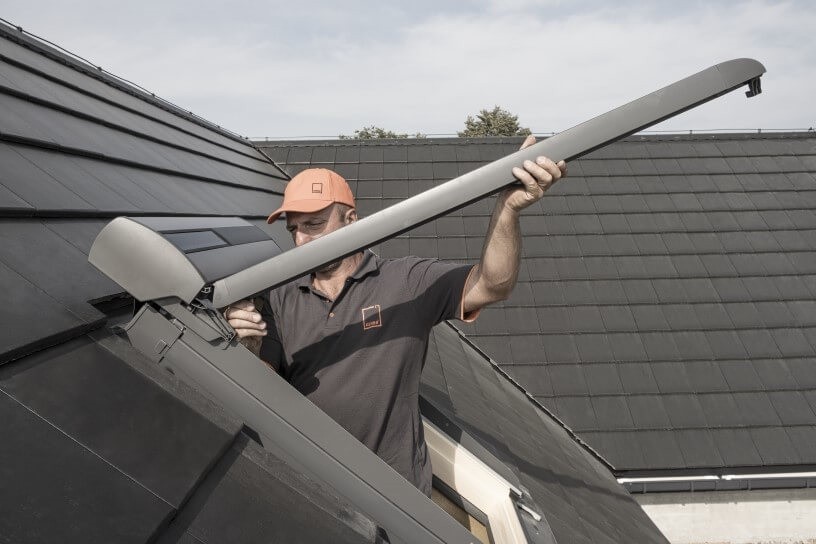
Professional Installer Leak Advice
As a roof window installer, there are a few extra tips for diagnosing the problem and providing an effective solution.
Sourcing the Leak
We usually advise that if the water appears between the window opening sash and frame, then it’s due to a problem with the roof window. If the water appears between the roof window frame and the internal reveal or wall, then it could be a sign of poor installation. But using a RUC underfelt collar during installation, can help prevent these issues.
It’s important to highlight that the point of leakage and where the water drips from and appears in the room are two different things. In many cases the water appears in the room where it cannot flow further because of a gap/crack or hole on the surface. The leaking point is usually different, where the water can absorb into the roofing materials from outside.
Installation
If the roof window has been recently installed, the problem is likely with an error in installation.
Flashing Installation
A couple of things to keep in mind. The flashing kit must match the roof window being installed, as this prevents gaps where the flashing could leak. It could be a sign that the roof window wasn’t installed correctly. Also, do not forget to ensure the roof window flashing is the correct type for the roof covering material.
Underfelt Collar Installation
Apart from the flashings, there should be a secondary water barrier installed around the roof window frame, known as an underfelt collar. The purpose of this breathable membrane collar is to form an additional water barrier, so even if the flashing leaks, the membrane collar underneath the flashing should stop and drain the water away from the surface of the roofing membrane or felt. If the installation of the underfelt collar is not correct, it can leak too, which could be due to build up of condensation on the roof.
FAQs
Are leaking skylights covered by homeowners insurance?
Most insurance companies will cover leaking skylights that occur suddenly – for example, after extreme weather or due to a fallen tree. However, they usually don’t cover general wear and tear. You should check with your homeowners insurance company directly to be sure.
How much does it cost to repair a leaking skylight?
Repair costs depend on the cause of the leak – whether it’s simply down to adjusting a faulty installation or whether your skylight needs replacing completely. It can cost anywhere from £150-£1000. You should call a local contractor to take a look and provide a quote.
If your skylight is leaking soon after installation, you should call the installers and they might fix it for free as part of your initial contract – depending on the terms and the cause of the leak.
Why’s my skylight leaking after a new roof?
There are a number of reasons why new installations leak. Faults in the installation can cause gaps or holes in the seal, which lead to dripping water during wet weather. It could be that the roof slope is too shallow so strong winds are able to lift the tiles up and allow water to get underneath.
You should call up your original contractors and let them know as soon as possible as they’ll be best equipped to deal with the problem and the cost might be included within your original contract.
What to do when my roof is leaking?
The first thing to do when your roof leaks is to use containers to collect the water as best as possible to prevent damage to your room, and remove any valuables. Call a local roofer or skylight window contractor (depending on the source of the leak) as soon as possible as they will be able to diagnose the problem and fix it.
Article: 12 common roofing problems (and how to fix them)
Looking for a new roof window or skylight? View Dakea’s roof window and skylight window range – designed for professionals.

